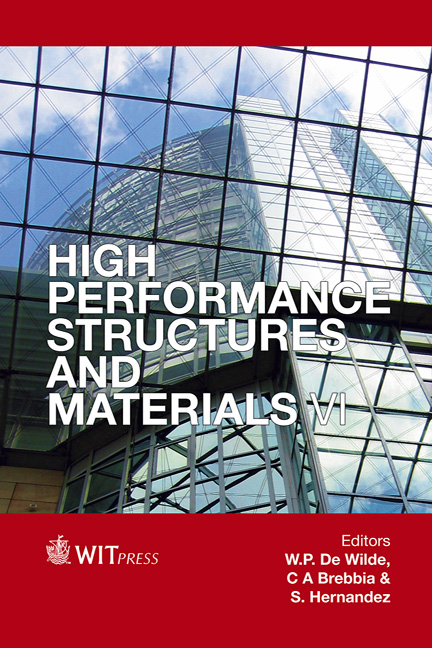Effect Of Fiber Interval On Tensile Strength Of Fiber Reinforced Plastics In Multi-fiber Fragmentation Test
Price
Free (open access)
Transaction
Volume
124
Pages
11
Page Range
145 - 155
Published
2012
Size
1,296 kb
Paper DOI
10.2495/HPSM120131
Copyright
WIT Press
Author(s)
A. Maki, A. Sakuratani, T. Atsuoka & T. Hirayama
Abstract
Plastics reinforced by natural fibers may be more susceptible to damage than those reinforced by carbon or glass fibers. Composite damage might be affected by fiber interval and interfacial strength between fiber and matrix resin because mechanical properties and composite damage relate to the interaction between fiber and resin. It is quite difficult to evaluate the effect of composite damage for tensile strength by using actual fiber reinforced plastic. Therefore, multi-fiber fragmentation specimens were formed by changing the number of fibers, the fiber interval, and the interfacial strength and then conducting a tensile test to evaluate the effect of fiber interval and interfacial strength on tensile strength and composite damage. Before molding the plastic, the fiber surface was modified by ethylene plasma treatment to improve adherence to the resin. The interfacial shear strength increased by 63% after 2 min. This is due to improved wettability between the fiber and polypropylene by the formation of thin film on fiber surfaces containing function groups such as (CH2)n, CH, C=C, and CO. Tensile tests on multi-fiber fragmentation specimens showed that the tensile strength decreased when the fiber intervals were widened because the tensile strength was affected by composite damage such as interfacial debonding, fiber break, crazing and whitening of polypropylene. In plasma-treated specimens, whitening as well as crazing was controlled by improving the interfacial strength between the fiber and polypropylene with an ethylene plasma treatment, which improved the tensile strength. This demonstrates that composite damage has a close relationship with fiber interval and interfacial strength, and that tensile strength might be increased by controlling them. Keywords: multi-fiber fragmentation test, fiber interval, plasma treatment.
Keywords
multi-fiber fragmentation test, fiber interval, plasma treatment.





